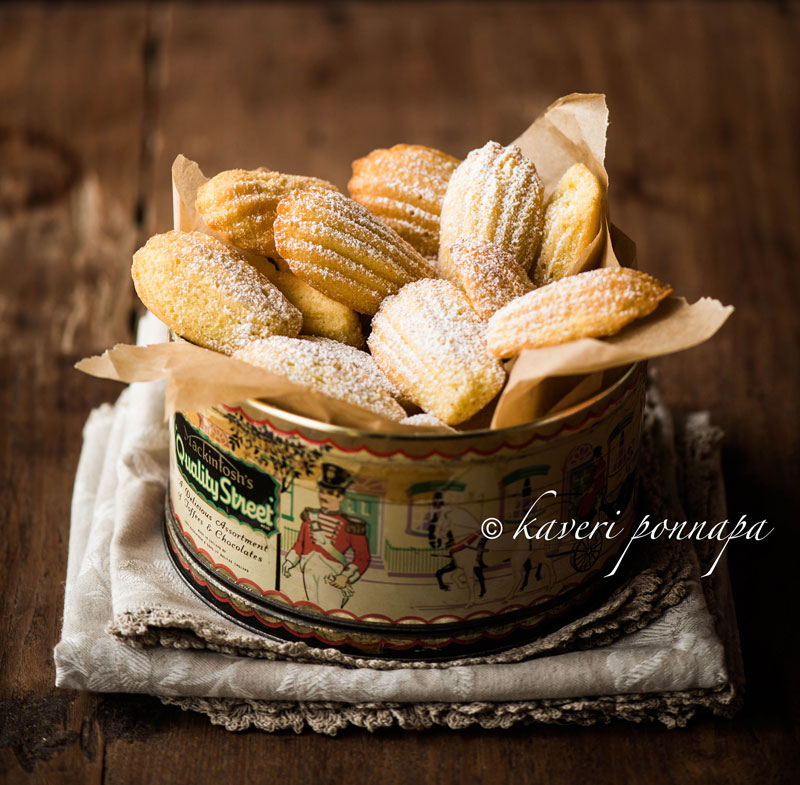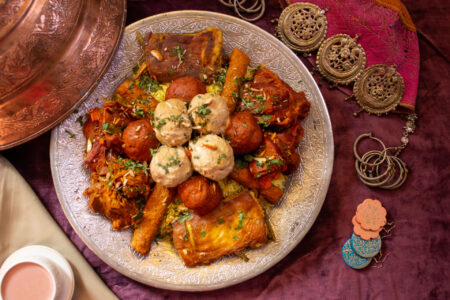A plain sponge cake was the cornerstone of the plantation cook’s baking skills. It required less than three main ingredients, most of which were easily at hand, and it could be relied upon to brighten up the dullest tea table with its moist, light, springy sweetness. It was comforting and familiar, a slice good enough to dip into a cup of tea while reading a book or newspaper; at the same time, a swiftly made quantity of buttercream icing was enough to dress it up to greet unexpected company. And it remains the best base for a really good, alcohol infused trifle.
Flora Annie Steel and Grace Gardiner give this recipe and these stern, emphatic instructions for making a sponge cake, ending with an afterthought that best sums up why this very simple cake enjoyed unending and universal popularity: Sponge Cake: Eight unit eggs, 8 of white sugar, 4 of flour. Break the eggs whole on the sugar, and beat steadily for half-an-hour by the clock with a spoon, sift in the flour and beat for ten minutes. (Unrivalled)
The sponge cake spread from plantation homes to local bakeries in small hill towns and flourished, enjoying great popularity. You came across a local interpretation in glass-fronted cases in very small shops, coloured an unattractive dark yellow, smelling strange and unappetizing, quite unlike the light, pale lemon slices served up on pretty plates and intricate lace mats. “Duck eggs” muttered the cook darkly, when you tried to ask timidly why those cakes looked so different.
I have baked a French version of an old favourite – madeleines – infused with the grated zest and juice of limes, flavours that add brightness to something that is already near perfect. For the rest, the ingredients are the same: eggs, butter and sugar, used by generations of home cooks in vast country kitchens with wood fired ovens that have now mostly vanished, to create the perfect sponge cake. The madeleine is a more elegant creation, with its characteristic little bump and a delicate dusting of icing sugar sitting lightly on it scalloped contours, tender and light; but it is, at heart, a sponge cake – and a well-made sponge cake, big or small, as Steel and Gardiner claimed, remains unrivalled.
Madeleines
Ingredients:
- 100g caster sugar
- 150g flour
- 180g butter, melted
- 4 eggs
- 1 ½ tsp baking powder
- grated rind and juice of 1 large lime
- a pinch of salt
- icing sugar to dust
Method:
- Sift the flour, salt and baking powder together, whisk and set aside. Butter and flour a madeleine tin and set aside.
- Melt the butter and allow it to cool slightly.
- Whisk the eggs and sugar until pale and thick. Add the grated lime zest and juice.
- Add the sifted flour and baking powder and whisk together until mixed.
- Add the melted butter and combine well.
- Spoon or pipe into a madeleine tray. Bake at 180C until risen and golden, about 10 mins. Allow to cool for a few minutes in the tin, then transfer to a wire rack to cool completely.
- Dust with icing sugar. Madeleines are best served on the day they are baked. Makes about 2 dozen madeleines.
Image Credits: Nithin Sagi
All Food Styling: Kaveri Ponnapa




